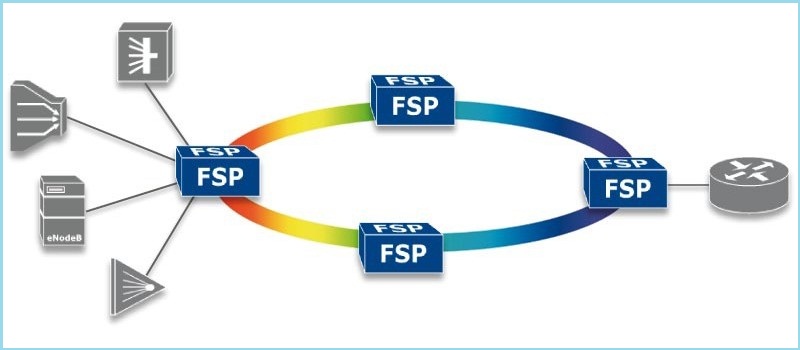


The biggest question roaming around the industry is why one should go permanent rather than temporary? Well, there are many cons and pros defending the question; more to it the people in the room think that they may earn more with permanent positions along with many benefits. In some instances, this may be in another case. You have to look at the amount of work over a whole year and the bigger picture. While this might not always the best thing to jump into.
Taking a good break and moving in the right direction and up the ladder will definitely bring good progress in your career. This is what you see a lot in senior and permanent employees; who actually earn almost as much as they can from their professional and personal experience. More to salary; you will also entitle to have the below-mentioned privileges’ which include:

Here are few pros and cons of Temp Vs Perm
Temporary
Transparency & Flexibility

Most essential reasons most candidates look before they step in any organization is transparency and flexibility. Both of the reasons are cited by many candidates who are looking for Temp positions. The length of the projects they will be put in will give the exact picture about the time frame they will stay in the temporary project; but in addition, there are plenty of options like project contract extensions, holiday’s, flexibility in the working hours and more are attracting the jobseekers to opt for temp positions. Temp work is always a good option for those who want a bit of freedom and flexibility in their role.
Financial Opening

Temp work is not just about flexibility and transparency, but the financial opportunities for temp workers are high and potentially more compared to the permanent employees; even the employers don’t need to be anxious about sick pay, holidays or pensions, and paying cash free for daily rate while as in permanent positions.
Diversity & Practice

Many candidates like to opt for temp projects as they have diverse opportunities to go with and they can easily plan their lifestyle along with choosing the right fit role with good exposure. There are fewer politics to worry about and no need to think about the benefits that come of gaining experience with diverse employers. Here you will have ample of opportunities to pick and work with.
Employer’s Choice

The best reasons that the contract market continues to thrive today is - it’s great for employers too; they have a choice to pick the employee with their required requirements. With restrictions in their place, the hiring process for full-time is tougher than the temp positions. Filling the requirement for a certain period is manageable by offering good package and benefits. However, for many employers, the contract can be a good alternative; as contractors often find themselves in high demand.
Permanent
Association & Safety

Today if we see, many employees are looking for these two reasons which are associated with their jobs and provide them the safety they are looking in for. Close association and safety are two essential things for the employees in today’s work atmosphere. Both need to be closely associated with any kind of work you are going with. Most of the employees like to pick permanent jobs for good association and safety. Whether they’re actual or apparent these kinds of benefits are more usually associated with permanent roles than temp positions.
Getting Further

A permanent position is more defined than temp and often offer strong career path than contract roles with clear opportunities towards the advancement within the organization. Moreover, the permanent employees are more likely to make a choice on the rewards of their hard work on a project than temp, who may previously be on their next project when the approvals are handed out.
Secured Pay

While choosing the temp role can add big numbers in your pay and make your financial map high. However, a guaranteed pay cheque by the end of each month is a huge incentive for permanent employees, along with the benefits that come within – holiday pay, sick pay and any other bonuses the organization might offer.
Know where you like to land

Though flexibility, diversity, financial stability, are great for some employees, but what others are thinking to opt is what we need to prefer to know and where they are based and what are they doing on a daily basis. However, the permanent roles tend to offer to more locked-down employment practice.
What to opt?
While it is impossible to predict whether a temp or perm, obviously, there’s no ultimate answer to this question - the right answer is the one – that right fits for you.
But whichever side you like to choose, we will help you fit in that role as we being the best recruitment partners for many years now.
...
Read More

Digitalization, digital networking, research, network automation, education and educational networks; are all these the buzz words of recent technology and for education institutions? Why everyone is talking about digitalization and networks, how are these both interconnected; and what is network automation and education networks are what we are going to know on this blog today .
While what the smaller research say about the education networks and individual campus networks; we can say that both stand for the same aim which is implementing education through current network automation strategies and tools. Are these tools, strategies, and significant efficiencies or the network automation wave more hype than these smaller institutions?
Let us look at some of the regional networks, how they are succeeded and what are the challenges involved in this path of deploying various network automation with relatively small and outsourced staff and support. Also discussed will be the experience of working with this diverse technology and how it increased the awareness about the possible proposed value of network automation and how regional’s can assist smaller schools through this network path.
Digital learning and collaboration have become an essential part of today’s education. From k-12 schools are implementing the methods of digital learning. These blended learning methods and one to one computing programs are reshaping the classroom studies and engaging more students to become tech-savvy’s. The higher educational institutions are announcing BYOD- which means bring your own device concept; students are also allowed to use their smart phones, laptops, tablets and other gadgets to be connected. This helps the institutions to meet the unprecedented demand for connectivity with high performance and to get recognized as highly reliable campus and data network center solution provider.

Challenges:
The hike of latest technologies, mobile devices and growing appetite for applications and rising security concerns are placing new burdens on educational networks. To meet these challenges, schools are expanding their networks to meet student and faculty expectations for high performance, highly reliable, and always-on connectivity.
The school network is always mission-critical, and downtime will be more and un-tolerable when class lectures, research projects, assignments are involved. We can see diversity and richness using these educational applications as learning is increasingly leveraging interactive curricula, collaboration tools, streaming media, and digital media. The success of the Common Core Assessments hugely depends on connectivity. The higher education, universities, and colleges that have poor quality, non-ubiquitous network access, quickly discover that this is affecting their registration/enrollment rates.
The other challenge is with the number of Wi-Fi devices and the types of devices students bring to a university or college campus; Students commonly have three or more devices like; smartphone, tablet, laptop, gaming device, or streaming media player and expect flawless connectivity. While higher education is deploying wireless IP phones for better communications, IP video cameras to develop physical security, and sensors for a more efficient environment. The projections for the Internet of Things, which will connect hundreds of billions of devices in a few short years, are nothing short of staggering.
The trends that educational networks are looking today for students, faculties and administrator expectations is that of for the connectivity which is rising and the complexity and cost of networking are also growing exponentially. In addition to this growth, the “adding on” to networking equipment for old designs is causing the network to become ever more fragile. IT budgets are tight, and technology necessities are growing faster than the funding.
What if schools took a step back and had a unique opportunity to proactively aim their networks to meet the challenges which hit today and tomorrow? What if deploying the network was simple, not a manual, time-consuming chore? What if your initial design and build could scale for years to come, without having to build configurations on the fly every time? What if networks were easier to plan and build, configure and deploy, visualize and monitor—and had automated troubleshooting and broad reporting?
The tools which are of high configurations help the educational networks are Juniper Networks, HP, CODE42, DLT, EKINOPS, Level 3, cloudyCluster, OSI and much more. It’s time to update the educational institutions towards the design, building, and maintaining the network and taking the advantage of automation and modern management tools to create scale, consistency, and efficiency.
...
Read More

Artificial intelligence has been spread over a very large area of computing since the beginning of the computer, but we are getting closer than ever with cognitive computing models. What are these models and why are we talking about it today.
Cognitive computing comes from a mash-up of cognitive science which is the study of the human brain and how it functions and a touch of computer science and the results will have far-reaching impacts on our private lives, healthcare, business, and more.
What is Cognitive Computing?
The aim of cognitive computing is to replicate human thought processes in a programmed model. It describes technology platforms that broadly speaking, and which are involved in self-learning systems that use data mining, natural language processing, and pattern recognition to mimic the way the human brain works. With the goal to automate the IT systems that are capable of solving the problems without requiring human assistance the Cognitive computing is growing very fast.
Cognitive computing systems use machine learning algorithms; which repeatedly acquire knowledge from the data fed into them by mining data for information. These systems treat the way they look for patterns and as well as the way they process data so they have become competent of anticipating new problems and modeling possible solutions.
Cognitive computing is used in numerous artificial intelligence applications (AI), including expert systems, neural networks, natural language programming, robotics and virtual reality. While computers are proved the faster machines at calculations and meting out the humans for decades; these machines haven’t been able to accomplish some tasks that humans take for granted as simple, like understanding natural language, or recognizing unique objects in an image. The cognitive computing represents the third era of computing: it from computers that could tabulate sums (the 1900s) to programmable systems (1950s), and now to cognitive systems.
The cognitive systems; most remarkably IBM and IBM +0.55%’s Watson, depend on deep learning algorithms and neural networks to process the information by comparing it to an education set of data. The more data the systems are exposed to, the more it learns, and the more accurate it becomes over time, and this type of neural network is a complex “tree” of decisions the computer can make to arrive at an answer.

What can cognitive computing do?
As per the recent TED Talk from IBM, Watson could ultimately be applied in a healthcare setting also, this helps the administrative department of healthcare to collate the span of knowledge around conditions, which include the patient history, journal articles, best practices, diagnostic tools, and many more. Through this, you can easily analyze that vast quantity of information, and provide your recommendations as needed.
The next stage is to examine, which will be proceeded by the consulting doctor, who will then be able to look at the evidence and based on the recorded evidence the treatment options will be released based on these large number of factors including the individual patient’s presentation and history. Hopefully, this will lead to making better treatment decisions.
While in other scenarios, when the goal is not to clear and you look to replace the doctor, and the doctor’s capabilities by processing the humongous amount of data available will not be retained by any human and thus providing a summary of potential application will be overdue. This type of process could be done for any field such as including finance, law, and education in which large quantities of complex data will be in need to be processed and analyzed to solve problems.
However, you can also apply these systems in other areas of business like consumer behavior analysis, personal shopping bots, travel agents, tutors, customer support bots, security, and diagnostics. We see that there are personal digital assistants available nowadays in our personal phones and computers like —Siri and Google GOOGL -0.21% among others, which are not true cognitive systems; and have a pre-programmed set of responses and can only respond to a preset number of requests. But, as tech is on high volume we will be able to address our phones, our computers, our cars, our smart houses and get a real time in the near future when thoughtful response rather than a pre-programmed one.
The coming future will be more delightful for us as computers will become more like humans and they will also expand our capabilities and knowledge. Just be ready to welcome the coming era when computers can enhance human knowledge and ingenuity in entirely new ways.
...
Read More

When your customers value your business propositions, what should be the next is the question to be asked to every business entrepreneur today. As per the recent survey, 80% of you do, but only 8% of your customers actually come back to you and agree that you provide superior value.
Now it’s not going to help you out as it is a sad state of affairs, for you and for your customers too. It’s self-evident that great customer satisfaction drives customers loyalty as well a wish to repeat your business levels to more or to next stage; this will, in turn, help you to grow fast and more generously with expected revenues. Best example: When you follow up on your sales leads and identified by your loyalty surveys that your revenue increases of more than you expected.
Since we know that everyone today is more cautious about keeping their date safe, collecting it, or using it to improve and maintain their customer relationship for as long as they can. But, back then there are still constraints on server and storage capacity, which leads to lack of high-scale software tools, limited companies’ ability to understand their customers.
Today, all that has changed, using the resources are available in the cloud, but how far, as you know that virtually unlimited amounts of cheap storage, complicated analytics, and gadget learning, to name a few is possible now to gain of detailed and actionable insights as never before; and you can truly know our customers.
Take an example: A famous sports franchise captures every interaction the championship team has with its fans from the website to online merchandising to mark on social feeds and grabs more attention towards its brands.

If you want to implement such advanced techniques to your business growth then there are tools available in the market such as Dynamics Online, Dynamics Marketing, Microsoft Office 365 and Power BI for Data Visualization.
Many businesses do not use application analytics for improving their customer relationships. According to Forrester, it’s more likely to use analytics first and foremost to monitor and improve the performance of your applications. That’s a good thing to do- but if performance is all you need to monitor, as you are leaving your money on the table; make sure that your priorities in digital marketing must include by improving your customer engagement, your customers wants, which makes you too easy the work and measure convenience, personalization and trust.
Successful companies including your competitors are increasingly aware that they are all inevitably becoming software and analytics companies. All the data is in use or the data they collect from their customers can be analyzed to maximize your relationship and of course your profits. That means that software which is not ready must become a core competency for your company.
MARC ANDREESSEN famously remarked as venture capitalist a few years ago marked — Software, is “eating the world.”
...
Read More

Big or small, companies today are finding different ways to capture and use more data. Almost everyone agrees to this that Big Data has taken the business world by storm. But what’s next? What are the technologies which will develop around it?
Or Will data continue to grow; and can it become a relic as quickly as the next trend — Cognitive Technology? Fast Data? - appears on the prospect. Let’s look at some of the predictions from the foremost experts in the field, and how likely they are to come to pass and see how the push to make big data more mainstream and stronger in 2016.

 \
\
Time will only tell which of these predictions will come to real pass and which will merely pass into darkness. But the important takeaway will be all about Big data that is only going to get bigger and every business for and into data and for those companies that ignore it will be left further and further behind.
...
Read More